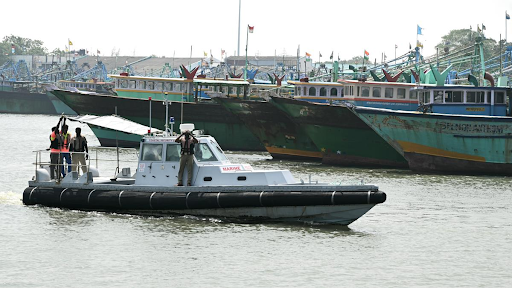



HAL's Combat Air Teaming System (CATS) integrates manned and unmanned aerial vehicles for enhanced combat effectiveness. It includes the CATS Warrior UCAV, CATS MAX mothership, and precision munitions like CATS Hunter. Powered by advanced AI, it aims to revolutionize India's defense capabilities with autonomous, risk-reducing, and high-efficiency missions.

Disclaimer: Copyright infringement not intended.
Ahead of the Aero India 2025 which is scheduled to be held next month, Hindustan Aeronautics Limited (HAL) has achieved a significant milestone by conducting the engine ground run of a full-scale demonstrator, Combat Air Teaming System (CATS).
Component |
Details |
|
CATS Warrior |
Unmanned Combat Air Vehicle (UCAV) powered by dual HAL PTAE-W turbojet engines. Designed for reconnaissance, strike missions, and deploying 24 ALFA-S drones for precision loitering munitions. |
|
CATS MAX (Mothership) |
Likely based on a modified HAL Tejas fighter or other manned platforms. Acts as the central control hub for UAV coordination. |
|
CATS Hunter |
A precision air-launched cruise missile weighing 600 kg and carrying a 250 kg payload, capable of 200–300 km strike range. |
|
CATS ALFA |
A carrier platform that deploys ALFA-S loitering munitions designed for autonomous attack and precision strikes. |
|
CATS Infinity |
A high-altitude, solar-powered drone designed for surveillance and communications, capable of operating at 70,000 ft altitude. |
|
AI Systems |
Integrates autonomous decision-making and AI-driven control systems to enhance mission success and reduce human errors. |
The HAL CATS Warrior represents a milestone in defense technology enabling autonomous, highly effective combat operations that significantly reduce personnel risks while increasing operational efficiency. Its successful engine ground operation and upcoming test flights signal a promising future for India's Combat Air Teaming System.
Source:
|
PRACTICE QUESTION Q.Combat Air Teaming System (CATS) is a step towards enhancing the operational capabilities of the Indian Air Force. Discuss its key features, potential advantages, and challenges in the context of modern warfare. How does CATS contribute to India's self-reliance in defense technologies? (150 words) |





© 2025 iasgyan. All right reserved